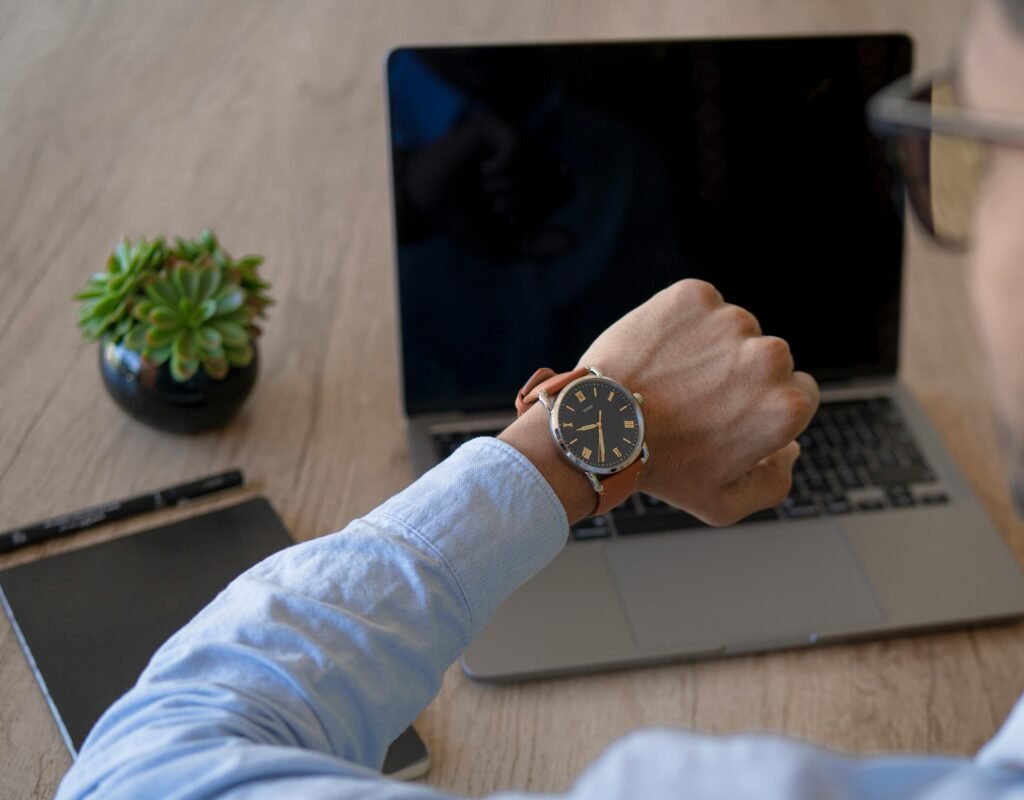
Understanding Introvert Needs
Introverts often find themselves more productive and comfortable in environments where they can minimize external stimuli and focus deeply.
Unlike extroverts who thrive on social interactions, introverts recharge through solitude and quiet.
Recognizing these preferences is crucial for crafting a workspace and routine that cater to their unique needs.
When working from home, the absence of a bustling office environment can be both a blessing and a challenge.
Introverts may relish the lack of constant social interaction, but they can also find it difficult to set boundaries and manage their time effectively.
This is where understanding and accommodating their need for quiet and order becomes essential.
First, it’s important to acknowledge that introverts may require more breaks to recharge their mental energy.
Short, frequent breaks can help maintain high levels of productivity without overwhelming their senses.
Taking a few minutes to step away from the desk, breathe deeply, or engage in a calming activity can be incredibly beneficial.
Noise control is another vital aspect.
Introverts are often more sensitive to noise, which can be a significant distraction.
Investing in noise canceling headphones or creating a silent workspace can dramatically improve their ability to concentrate.
This could mean setting up a dedicated room for work or simply finding the quietest corner of the house.
Lighting also plays a crucial role. Harsh lighting can be overstimulating, so opting for natural light or softer, adjustable lighting can create a more comfortable work environment.
This not only helps reduce eye strain but also promotes a calm and serene atmosphere, conducive to deep work.
Personalizing the workspace with comforting elements can further enhance productivity.
Items like a favorite chair, soothing scents, or a cozy blanket can make the workspace more inviting and less stressful.
These small touches can significantly boost morale and help maintain focus throughout the day.
In addition, introverts tend to benefit from structured and predictable routines.
Knowing what to expect from their day allows them to plan their energy and workload accordingly.
Having a consistent start and end time, scheduled breaks, and clear goals can make the workday more manageable and less stressful.
Lastly, it’s essential to recognize the value of setting clear boundaries.
Introverts may need to communicate their need for uninterrupted work time to family members or roommates.
This ensures that they have the solitude necessary to focus and perform at their best.
Techniques like using a “Do Not Disturb” sign or setting specific times for interaction can help create a more controlled and less chaotic environment.
By understanding and accommodating these needs, introverts can thrive in a work from home setting, maintaining high productivity levels while safeguarding their well-being.
Creating a Calm Workspace

Creating a calm workspace is essential for introverts working from home.
A well organized and serene workspace can mitigate these distractions.
Consider positioning your desk away from high traffic areas and reducing clutter to minimize visual noise.
Choosing soothing colors like soft blues, greens, or neutrals can create a calming atmosphere.
Adding elements such as plants or a small fountain can further enhance tranquility.
Personal touches, like artwork or photographs, can provide comfort without overwhelming the senses.
Setting up a dedicated work area that minimizes interruptions can significantly improve focus and productivity.
Time Management Techniques

Introverts thrive on order and structure, which makes effective time management a cornerstone of their productivity.
By implementing strategies tailored to their natural preferences, introverts can enhance their focus and work efficiently from home.
A powerful technique for maintaining deep focus is time blocking.
This involves dividing your day into dedicated segments for specific tasks.
By setting aside uninterrupted blocks of time for focused work, you can significantly reduce the mental strain of constantly switching between tasks.
Research from the University of California, Irvine, shows it takes an average of 23 minutes to regain focus after an interruption, potentially reducing productivity by up to 40%.
This method helps mitigate such disruptions, allowing for more sustained periods of concentration.
Another effective strategy is the Pomodoro Technique, which involves working for a set period, typically 25 minutes, followed by a short break.
This cyclical pattern helps maintain high levels of focus while also providing regular opportunities to rest and recharge.
These breaks are crucial; even a few minutes spent stretching or stepping outside can help refresh your mind and maintain your energy levels throughout the day.
In addition to time blocking and the Pomodoro Technique, consider batching similar tasks together.
Grouping tasks that require similar skills or resources can make transitions smoother and less mentally taxing.
This reduces the cognitive load and helps maintain a steady workflow.
For instance, designate specific times for checking emails, attending virtual meetings, or working on reports, rather than switching between these tasks frequently.
Minimizing interruptions is essential for maintaining productivity.
Tools like Freedom or Focus@Will can help by blocking distracting websites and apps during work periods.
Kathleen Hogan, Chief People Officer at Microsoft, emphasizes that “in today’s world of remote and hybrid work, it’s not sufficient to only encourage self-care. We need to innovate and leverage technology to help employees operationalize much-needed breaks into their daily routines.”
These tools can be invaluable in creating an environment where introverts can work with minimal disturbances.
Creating a to do list at the start of each day can also be highly beneficial.
Outline your tasks in order of priority and set realistic goals for what you want to achieve.
This not only provides a clear roadmap for the day but also gives a sense of accomplishment as you check off completed tasks.
Incorporating these lists into your digital tools can help keep everything organized and easily accessible.
Flexibility is another key aspect of effective time management.
While structure is important, it’s also crucial to allow some flexibility in your schedule to accommodate unexpected tasks or changes.
Being adaptable can reduce stress and help you stay on track, even when things don’t go exactly as planned.
Maintaining a healthy work life balance is vital.
Set clear boundaries for work hours and stick to them.
When the workday ends, make a conscious effort to disconnect from work-related activities.
This can be achieved by having a wind-down routine that signals the end of the workday, such as a short walk or a relaxing activity.
Effective Digital Tools

Harnessing the right digital tools can significantly elevate productivity for introverts working remotely.
Task management platforms like Trello and Asana are excellent for organizing projects and tracking progress.
These tools allow you to break down larger projects into manageable tasks, set deadlines, and monitor progress, ensuring no task slips through the cracks.
For minimizing screen time and controlling notifications, tools like Freedom and Focus@Will can be game changers.
These apps help block distracting websites and manage notifications, allowing you to maintain a deep focus on your work.
Communication tools like Slack and Microsoft Teams are vital for remote work but can quickly become overwhelming with constant pings and messages.
Utilize features like ‘Do Not Disturb’ mode or schedule specific times to check messages, ensuring you’re not constantly interrupted.
Note taking apps like Evernote and OneNote can help you keep track of ideas, meeting notes, and important information all in one place.
These tools allow you to organize notes into notebooks and sections, making it easy to find and refer back to critical information.
For scheduling and time management, consider using calendar apps like Google Calendar or Microsoft Outlook.
These apps can help you plan your day effectively, setting aside time for deep work, meetings, and breaks.
Integrate your to do list with your calendar to keep everything organized and ensure you stay on track with your tasks.
To streamline workflows, use automation tools like Zapier or IFTTT.
These platforms connect your favorite apps and automate repetitive tasks, saving you time and reducing the mental load of managing multiple apps.
For example, you can set up a workflow that automatically saves email attachments to a specific folder in your cloud storage or sends a Slack message when a new task is added to Trello.
Video conferencing tools like Zoom or Google Meet are essential for remote meetings.
However, to avoid burnout, schedule meetings during times when you’re most alert and limit their duration.
Use features like screen sharing and recording to enhance collaboration and ensure that all participants can review the information discussed at their own pace.
Cloud storage solutions like Google Drive, Dropbox, or OneDrive are crucial for managing and sharing files.
These tools provide a centralized location for all your documents, making it easy to access and collaborate with colleagues.
Ensure your files are well organized with clear naming conventions and folder structures to save time when searching for documents.
For personal well being and mental health, consider using apps like Headspace or Calm, which offer guided meditation and relaxation techniques.
Incorporating these into your daily routine can help you manage stress and maintain a balanced mindset.
Incorporating these digital tools into your daily workflow can create a more structured and efficient work environment.
By leveraging technology, introverts can optimize their remote work experience, maintaining high productivity levels while minimizing distractions and stress.
Building a Routine

Establishing a consistent daily routine is vital for introverts who thrive on predictability and structure.
Developing a routine that balances work responsibilities with personal needs can prevent such burnout.
Start by setting a regular wake up time and morning routine to signal the start of the workday.
Include time for mindfulness or meditation practices, which can help center your thoughts and prepare you for a focused day ahead.
This mindful start can set a positive tone for the rest of your day, helping you to tackle tasks with a calm and clear mind.
As your workday progresses, implement structured time blocks for various tasks.
Time blocking not only helps maintain deep focus but also ensures you allocate sufficient time for high priority activities.
Whether it’s project work, emails, or meetings, having designated time slots helps manage your workload more effectively and reduces the risk of becoming overwhelmed.
Incorporate regular breaks into your schedule.
Short, frequent breaks are essential for recharging your mental energy.
Even a five-minute break to stretch or get some fresh air can make a significant difference in maintaining your energy levels and concentration throughout the day.
Use techniques like the Pomodoro Technique to balance periods of focused work with intervals of rest, ensuring you remain productive without feeling drained.
Designate specific times for administrative tasks such as checking emails or returning calls.
By batching these activities together, you minimize the interruptions that can disrupt your workflow and mental focus.
Reserve certain times of the day for these tasks, and stick to them to prevent them from encroaching on your deep work periods.
Plan your meals and hydration breaks as part of your daily routine.
Proper nutrition and staying hydrated play crucial roles in maintaining energy and focus.
Taking time for a balanced lunch and staying hydrated can help prevent the afternoon slump that often hampers productivity.
End your workday with a consistent wind down routine.
This could include activities like reviewing your accomplishments, setting priorities for the next day, and tidying your workspace.
A clear end of day routine helps signal to your mind that the workday is over, allowing you to transition smoothly into personal time.
Flexibility within your routine is also important.
While it’s crucial to have a structured plan, allow room for adjustments as needed.
Unexpected tasks or changes in priorities can arise, and being adaptable will help you manage these without feeling stressed or derailed.
By following a well-balanced and flexible routine, introverts can create a work environment that supports their natural preferences and enhances productivity.
Consistency in these practices helps maintain a clear separation between work and personal time, fostering a healthy work-life balance and preventing burnout.
Setting Boundaries

Setting boundaries is fundamental to creating an environment that supports productivity and focus for introverts working from home.
One of the most effective strategies is to communicate your work hours clearly to those you live with.
Let them know when you are available and when you need to be left undisturbed.
This simple step can significantly reduce the number of interruptions you face throughout the day.
Another critical element is having a dedicated workspace.
Whether it’s a separate room, a specific corner, or even a well defined section of a room, having a space that’s solely for work can help mentally separate your professional and personal life.
Make this area as comfortable and distraction free as possible.
When you step into this space, your mind should switch to “work mode,” and when you leave, it should switch off.
Physical signals can also be incredibly effective in maintaining boundaries.
Noise canceling headphones can signal to others that you are focused and not to be disturbed.
Additionally, placing a sign on your door or desk can serve as a visual cue that you are in the middle of a deep work session.
These small actions can communicate your need for uninterrupted time without you having to continually remind others.
Introverts often thrive with structure, so it’s beneficial to establish specific times for interactions and breaks.
Set up your schedule so that family or roommates know when they can approach you without disrupting your flow.
For example, if you take a break at 10 a.m. every day, they’ll learn to wait until then to ask questions or have a chat.
It’s equally important to set digital boundaries.
Limit the number of notifications you receive by using tools like Freedom or Focus@Will, which can block distracting websites and apps during work hours.
Inform colleagues of your focus times and request that non urgent communications be sent via email rather than instant messaging.
This approach minimizes the interruptions that can derail your focus and productivity.
Another key aspect is to establish a routine that includes clear start and end times for your workday.
This not only helps in managing your own time but also sets expectations for those around you.
When your workday is over, shut down your computer and put away work-related materials.
This physical act can help you mentally disconnect from work, signaling to yourself and others that your workday has ended.
Practicing self care is also crucial in maintaining these boundaries.
Ensure you take breaks to rest and recharge. Use these moments to engage in activities that help you relax and refocus.
This might include a short walk, a few minutes of meditation, or simply stepping outside for some fresh air.
In summary, setting boundaries involves clear communication, physical and digital signals, and a structured routine.
By implementing these strategies, you can create a work environment that minimizes interruptions, supports deep focus, and ultimately enhances your productivity and well being.
Embrace the discipline needed to maintain these boundaries, and you’ll find yourself thriving in your remote work setup.
